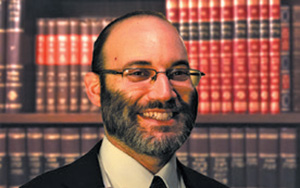
In 1857, a leading Reform-minded rabbi in America, Isaac Mayer Wise, published a prayer book he called Minhag America. With this publication, he attempted to unify American Jews around a single text of prayer, which, of course, faced immediate opposition and eventual failure. More radical reformers felt the book was too traditional, and more traditional Jews considered it too radical. Isaac Leeser, the leading traditionalist scholar in America who paved the way for the Conservative and Orthodox movements, approved of the concept but not of Wise’s book. Leeser believed that American Jewry has its own character that merits its own prayer text. However, he rejected Wise’s attempt because it failed to comply with Jewish law and tradition.
Later immigrants to America had another reason to reject Nusach America. Because the Reform movement and its precursors focused on changing the prayer books, these later-arriving, traditional Jews went in the other direction and clung to their varying European versions. Therefore, a unified text could not take hold even within Orthodoxy. Many synagogues share a unique prayer for the American government that cuts across division lines. In my experience, most right-leaning Orthodox synagogue do not recite this prayer, presumably because of their disapproval of newly written prayers.
Additionally, Americans observe a unique holiday—Thanksgiving—that could unite the community in a special practice. When I was first married, I attended the synagogue whose rabbi was Rav Feivel Cohen, a leading halachic authority. He strongly opposes observing Thanksgiving, and most other civic rituals, on halachic grounds. While other authorities disagree, his and similar views seem to have a large following, preventing Thanksgiving from serving as a universal American practice. Yet, even communities that do not recite the prayer for the American government and do not observe Thanksgiving still maintain a uniquely American character in a very basic way.
Jewish practice differs across countries. Much of this is due to the nature of the halachic process. In America, the views of Rav Joseph B. Soloveitchik and Rav Moshe Feinstein carried more weight than elsewhere. Therefore, we have our own American halachic tradition. For example, generally speaking we are stricter here on issues of abortion but more lenient with annulling non-Orthodox marriages. Every country follows its own halachic authorities, which leads to slight differences in practice. Similarly, every country follows its own thought leaders. America never had a Rav Elazar Shach or Rav Ovadia Yosef, whose sharp rhetoric helped define community boundaries and directions. Likewise, Israel never had a Rav Soloveitchik or Rav Yaakov Kamenetsky, whose tones and emphases were very different from their Israeli counterparts.
Often, Americans pronounce Hebrew differently. The “r” sound that Americans use when speaking Hebrew is different from Israelis. There is also an American/English way of pronouncing “o,” albeit not universal, that Ashkenazim in other countries pronounce differently. But this is all fairly superficial. There is a deeper distinction.
American Jews exhibit different attitudes and behaviors than those of other countries. Those who run gap year programs in Israel know that they must prepare different structures for Israelis and Americans because of the different behaviors and expectations. It is hard to reduce to specifics, but in general, Americans act with more autonomy and less formality. In constraint, Israelis tend to be more communal and aggressive, English more proper, Russians more cynical and so on for every major region. Of course, individuals vary and the group differences run deeper than a few adjectives. Be that as it may, every country has a distinct flavor.
The dominant culture penetrates even the strongest communal walls. I was recently speaking with a Gerer chasid and asked whether he noticed behavioral differences between Gerer chasidim from different countries. He immediately agreed. Israeli Charedim often note that American Charedim are much more moderate, and in the Israeli mind less authentic. The social boundaries in Israel, with its unique circumstances, differ from the more fluid social boundaries in America.
On the levels of behavior, ritual and outlook, every country’s Jewish community is unique. And we are proud of who we are. Orthodox Jews in America, even Charedim, consider themselves both Jews and Americans. We are Jews raised with American attitudes and traditions. Avraham and Yitzchak were among our forefathers. On a different plane, so were George Washington and Abraham Lincoln. Their stories and values, filtered through a Torah lens, permeate our beings. The American story is ours, albeit less strong than the way the Jewish story is ours. Even when American Jews emigrate, they bring with them their Americanism. It does not surprise me that Israeli Jews who moved from America enjoy a barbecue on July 4.
We hear a lot about nationalism nowadays. What was once a dominant philosophical concept is now a scary political term, and rightly so. Today, nationalism describes a chauvinistic hatred based on fear. As voices in the media denounce nationalism, we do well to remember why American Jews are patriots. We love America, not because we hate others but because America is very much a part of us. A lot of who we are comes from the various influences that made us. Torah, rabbis, teachers and parents constitute most of that influence, but the American spirit is also an influence. Minhag America is a reality, albeit in spirit and not in prayer.
By Rabbi Gil Student








